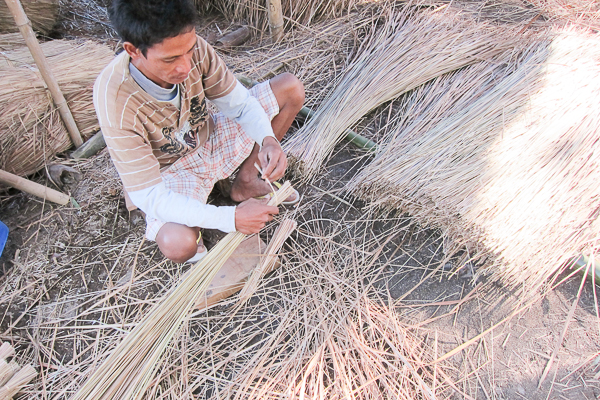The building materials: the roof
The abong roof style is a modified hip roof commonly referred to in the Philippines as "quatro aguas” meaning four waters and it has four sloping sides. I have a choice of either ‘nipa’ or ‘pan-aw’ for roofing material. Both would gave that native thatch look and feel, but differ in cost and efficiency. I selected the pan-aw because it is the most common roofing material preferred by the local folks and beside my crew are very familiar working with them. Pan-aw is a tall native grass that grows on the foothills of the Zambales mountain. Our pan-aw are sourced from several vendors including a couple from Sindol just north of San Felipe and from the town of Castillejos.
The roof is the most labor-intensive part of the abong project. We started preparing the pan-aw three months before we broke ground. At its peak there were five guys tasked just to prep the pan-aw. The process starts with separating the loose feaf from the stalk.
 |
| Separating the loose leaf from the stalk. |
 |
| Add caption |
 |
| This is how the pan-aw are installed and secured |
 |
| this is how the roof look from the inside. |
 |
| Add caption |
 |
| constructing the cap |
 |
| Add caption |
 |
| putting in the cap |
 |
| shaggy roof |
 |
| Roof getting a haircut |
 |
| The roof is about a foot thick a worker can stand on top without damaging it. Here a worker is inspecting for imperfection. |
 |
| Lek testing the roof. |








































No comments:
Post a Comment